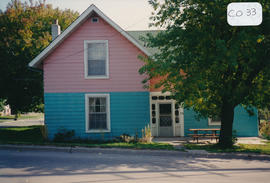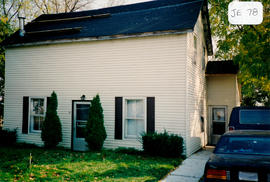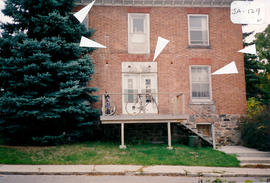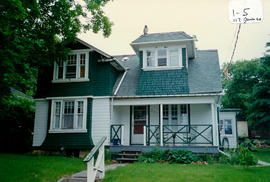33 Colborne Street - The Dan Collings House
- CA BWGPL GJ-HB-2017-03-18-19
- Item
- 1995
Parte de George Jackson fonds
The Dan Collings House is located mid-block at 33 Colborne Street. It was built in the Gothic Revival style in the 1880’s. There were once barns (for animals and equipment as well as for marsh hay) on the property. It was the original home of Dan Collings. He was always a teamster who worked the marsh and he later bought and sold junk and farm machinery. Dan had three daughters, Edna, Olive (Al Readman) and Emily (Chet Wilkinson). Dan was considered to be a real character who lived to the age of 93 years. Mrs. Collings died in the 1920’s.
The 1½-storey, two-bay ‘farmhouse’ has an ‘L’-shaped plan with an off-centre hall and a medium-pitched, gable roof. There is a single door with a multi-paned transom and sidelights. The structure has large window openings with low floor to ceiling heights. Large, replacement, double-hung windows are set into the original openings with plain, wood trim and sills. The house has wood frame construction with vinyl siding. Originally, the siding was probably wood. According to the 2000 inventory, despite its new colours, the basic Gothic Revival form is very evident in this house. (1, 2, 3)
Sem título










